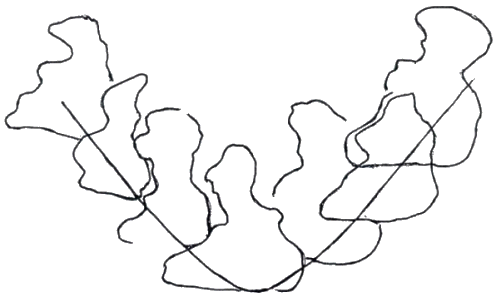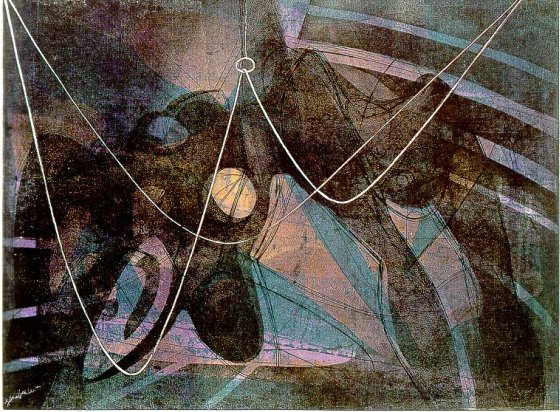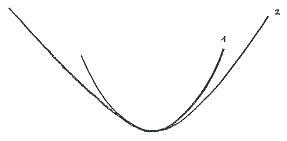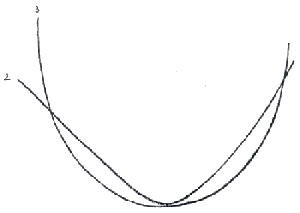
CATENARY CURVES
Chain curves are compared with parabolas,
ellipses and more concretely with cloud formations.
'Catenary curves (Latin: catena=chain) are illustrated in the workshop with a number of
suspended chains. The construction is shown as two symmetrical logarithmic curves (similar
to perspective) and understood as the progressive change between the lateral tension
against two points of attachment with the vertical pull of the weight of the chain. Using
a mirror it can be shown that all the asymmetric deformations of these chain curves
correspond to perspective views of the symmetric chain. The importance of the curve is
demonstrated as determinant of all suspended compositions or structures. Thus in a cloud
landscape from an airline poster in the workshop we showed that all of the masses of cloud
fell precisely on a series of catenary curves.---/'

Fig.154. Clouds suspended in a catenary
curve
The physical, not the cosmic, embodiments of catenary curves are considered - in suspended
chains and, more lightly, in clouds - both illustrating the same structure where the force
of gravity enters.

.XXI. LA NOYEE (DROWNED WOMAN), S.W.
Hayter
1955, etching, 'The Renaissance of Gravure, the Art of S.W. Hayter',
P.M.S. Hacker, Clarendon Press Oxford, 1988, Ashmoleum Museum, Oxford, figure 57, p. 87
Woman hangs from three different suspension points in the inert body. Catenary curves
emphase the drowned woman's hanging.
'---/ This curve is compared with a parabola of almost the same length and curvature and again a part of an ellipse so that the differences of curvature, as rigidity or flexibility can be appreciated.'

Fig.155. Parabola superimposed on a catenary curve

Fig.156. Superimposition of a catenary curve showing the force of gravity on a purely
geometric ellipse
'---/ It is pointed out that the ability to distinguish such forms one from
another is an essential part of the equipment of an artist. Although we might
consider this faculty to be innate it is obviously susceptible of cultivation
or of neglect resulting in atrophy.'
back |